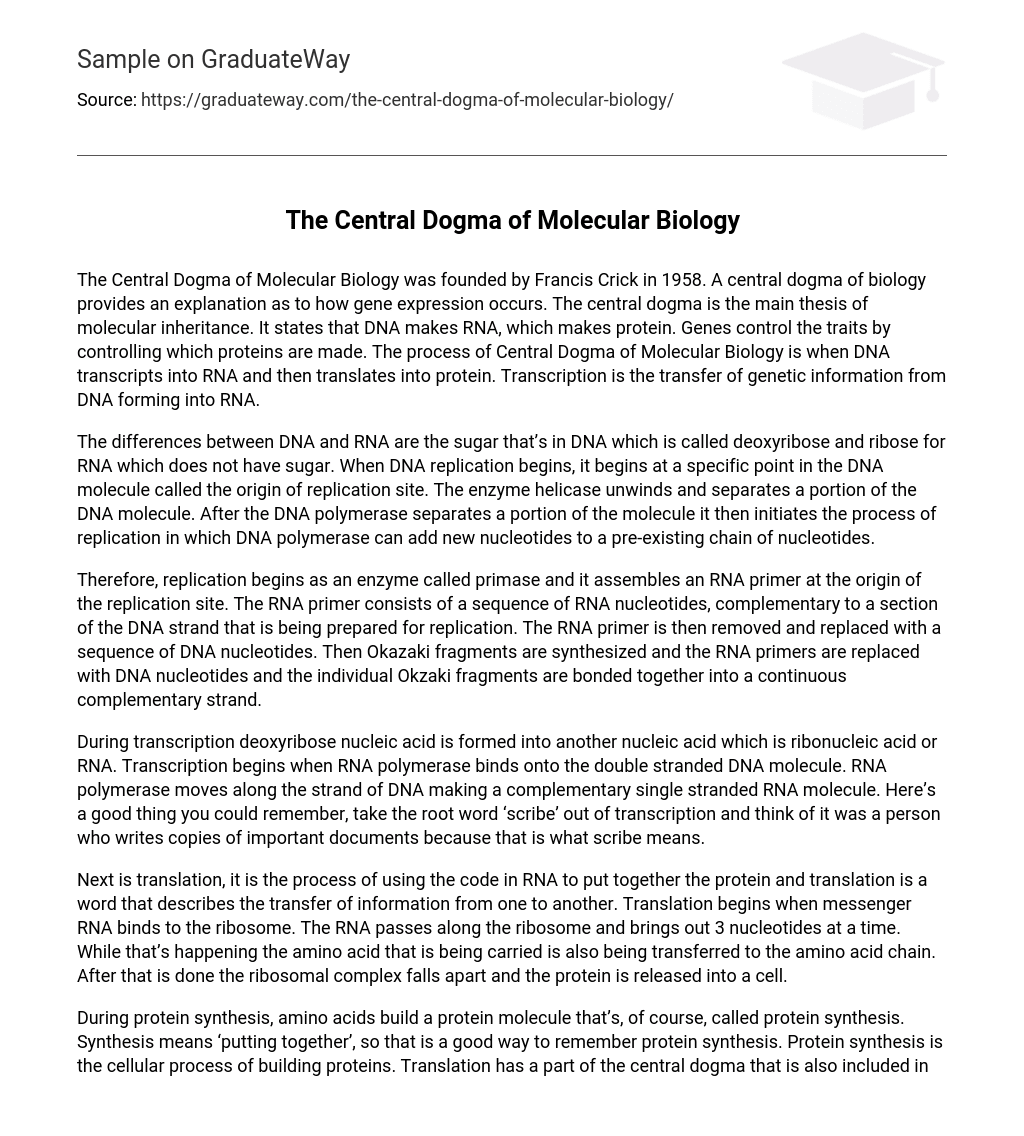The Central Dogma of Molecular Biology was founded by Francis Crick in 1958. A central dogma of biology provides an explanation as to how gene expression occurs. It states that DNA makes RNA, which makes protein. Genes control the traits by controlling which proteins are made. The process of Central Dogma of Molecular Biology is when DNA transcripts into RNA and then translates into protein. Transcription is the transfer of genetic information from DNA forming into RNA.
The differences between DNA and RNA are the sugar that’s in DNA which is called deoxyribose and ribose for RNA which does not have sugar. When DNA replication begins, it begins at a specific point in the DNA molecule called the origin of replication site. The enzyme helicase unwinds and separates a portion of the DNA molecule. After the DNA polymerase separates a portion of the molecule it then initiates the process of replication in which DNA polymerase can add new nucleotides to a pre-existing chain of nucleotides.
Therefore, replication begins as an enzyme called primase and it assembles an RNA primer at the origin of the replication site. The RNA primer consists of a sequence of RNA nucleotides, complementary to a section of the DNA strand that is being prepared for replication. The RNA primer is then removed and replaced with a sequence of DNA nucleotides. Then Okazaki fragments are synthesized and the RNA primers are replaced with DNA nucleotides and the individual Okzaki fragments are bonded together into a continuous complementary strand.
During transcription deoxyribose nucleic acid is formed into another nucleic acid which is ribonucleic acid or RNA. Transcription begins when RNA polymerase binds onto the double stranded DNA molecule. RNA polymerase moves along the strand of DNA making a complementary single stranded RNA molecule. Here’s a good thing you could remember, take the root word ‘scribe’ out of transcription and think of it was a person who writes copies of important documents because that is what scribe means.
Next is translation, it is the process of using the code in RNA to put together the protein and translation is a word that describes the transfer of information from one to another. Translation begins when messenger RNA binds to the ribosome. The RNA passes along the ribosome and brings out 3 nucleotides at a time. While that’s happening the amino acid that is being carried is also being transferred to the amino acid chain. After that is done the ribosomal complex falls apart and the protein is released into a cell.
During protein synthesis, amino acids build a protein molecule that’s, of course, called protein synthesis. Synthesis means ‘putting together’, so that is a good way to remember protein synthesis. Protein synthesis is the cellular process of building proteins. Translation has a part of the central dogma that is also included in protein synthesis and transcription is not. Translation is just the decoding of RNA to make a chain of amino acids that will then, later, turn into protein. Overall in central dogma, DNA is simply the instructions to making proteins.





